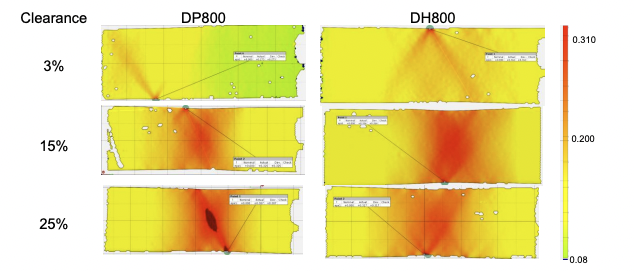
On the mechanics of edge cracking and the reliable determination of edge formability limits
- Post by: Tobias Larsson
- 29th July 2021
- No Comment
Abstract
Blanked edge surfaces are rough and hardened. They therefore lead to inhomogeneous deformation on the edge, which can trigger localization within the shear affected zone (up to few mm from the edge). The size and extent of these phenomena are primarily a function of the shearing process and are only marginally coupled to the global/homogeneous deformation behavior of the blank A direct numerical simulation of such local deformation effects would require a prohibitively high resolution to capture the microgeometry of the edge and thus remains unfeasible in the current industrial practice. A predictive model can therefore only be achieved by determining limit strains on the edge, which are compatible with the homogeneous numerical framework used. The present contribution aims discussing the basic mechanics of edge cracking based on tensile tests with edges blanked with different die clearances. The local and global strain evolutions in the vicinity of the edge are analysed and a new evaluation procedure is proposed for the reliable determination of limit strains. The application of this method in industrial context is also discussed.
Keywords
–
Citation
N Manopulo et al 2021 “On the mechanics of edge cracking and the reliable determination of edge formability limits” IOP Conf. Ser.: Mater. Sci. Eng. 1157 012055
